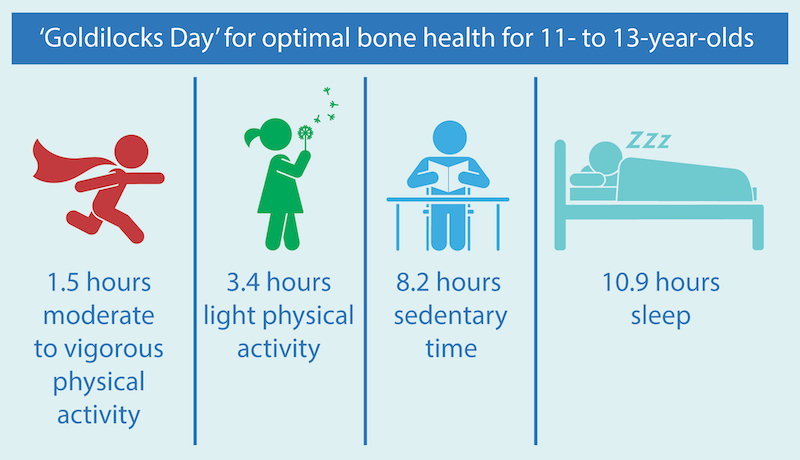Your child’s bones start to develop while they’re still in your belly and continue to grow right up until they turn around 20. This means that whatever you do now to help them grow strong bones will have a lasting impact on their bone health for the rest of their lives.
“Up to 90 per cent of peak bone mass is achieved by age 18-20,” says Dr Dot Dumuid, a research fellow at University of South Australia’s (UniSA) Allied Health & Human Performance department. “Optimising bone health in children is a key protector against osteoporosis, the leading preventable cause of fracture in adults and a major public health problem with considerable economic and societal costs.”
Osteoporosis is common in Australia, with 1.2 million people estimated to have the condition and a further 6.3 million with low bone density. Globally, osteoporosis affects 200 million people, with 75 million cases across Europe, USA and Japan.
And while it’s important to make sure they have enough calcium in the day, Dr Dot’s latest study has revealed that how much (or how little) activity your child does in a day has a profound impact as well.
What children need to grow strong bones
Dr Dot’s study, which examined 804 Australian children aged between 11 and 13, found that children need more moderate-to-vigorous physical activity, more sleep and less sedentary time to optimise bone health.
The study found the ideal balance of a child’s activities across a 24-hour period comprises:
- 1.5 hours of moderate-to-vigorous physical activity (sports, running around)
- 3.4 hours of light physical activity (walking, doing chores)
- 8.2 hours of sedentary time (studying, sitting at school, reading)
- 10.9 hours of sleep

Source: UniSA
“Higher levels of physical activity are known to be good for children’s bone health, yet we can’t just increase children’s exercise without impacting their other activities,” Dr Dot points out.
“In this study, we looked at the interrelating factors of physical activity (both light, and moderate-to-vigorous physical activity), sedentary time and sleep, finding an ideal combination that delivers the best daily balance.
“The ‘Goldilocks Day’ tells us the durations of physical activity, sleep and sitting that are ‘just right’ for children’s optimal bone health.”
Boys need more help to grow strong bones
Dr Dot says the study also highlights the importance of sleep, especially for boys.
“We always talk about getting enough exercise to help build bones, but for children, it’s vital that they also get enough sleep.
“Curiously, the study also showed that sleep is more important for boys’ bone health than for girls, with boys needing an extra 2.4 hours of sleep a day. However, boys tended to be at earlier stages of pubertal development than girls, causing us to speculate that the need for longer sleep is related to rapidly changing hormonal processes rather than gender.
“By knowing the best balances and interrelations of sleep, exercise and rest, parents and caregivers can guide their child’s daily activities to put them in good stead for future bone health.”
How helpful was this article?
Click on a star to rate it!
0 / 5. 0
Be the first to rate this post!
Melody Tan
Related posts
Subscribe
Receive personalised articles from experts and wellness inspiration weekly!

